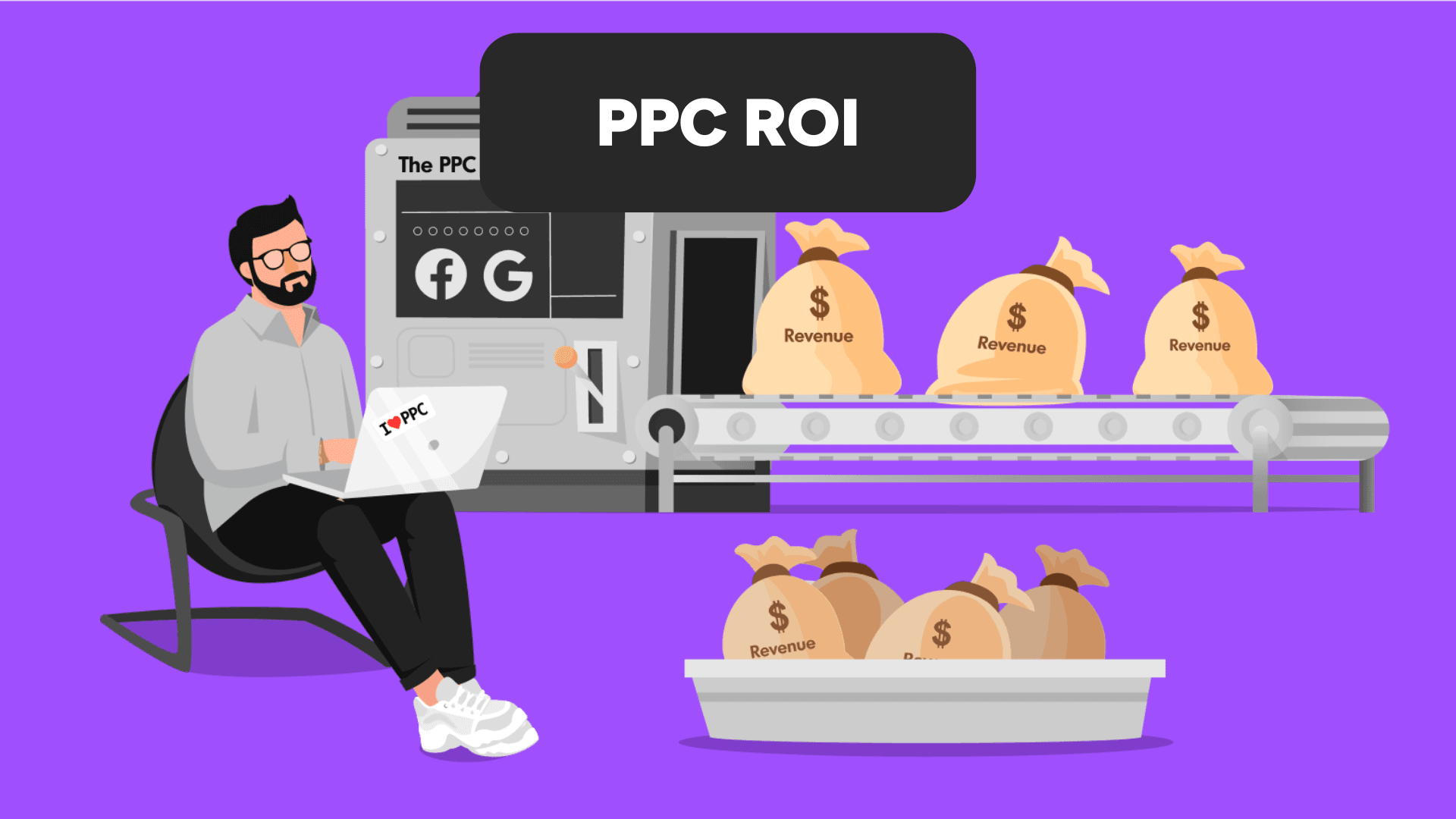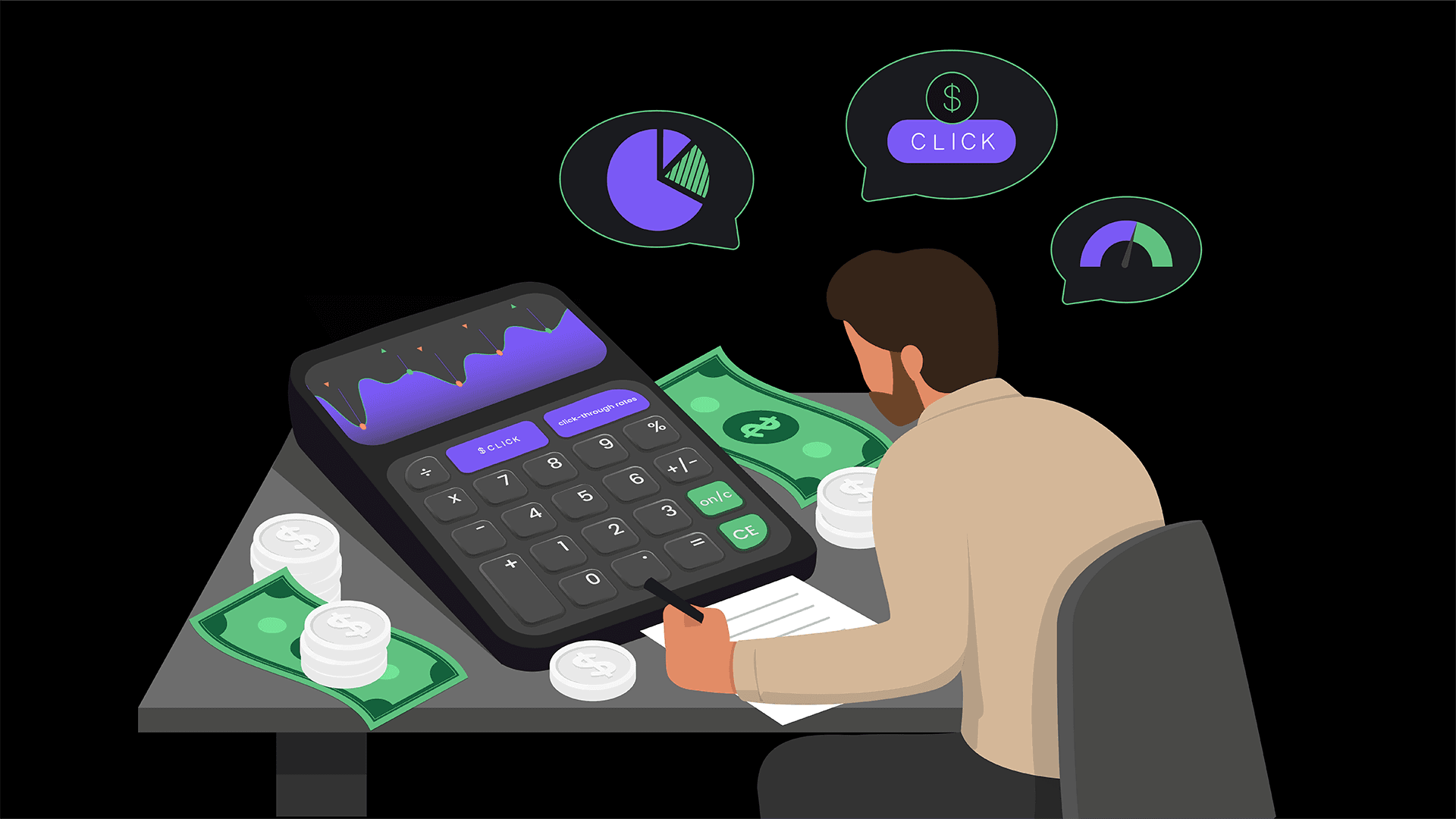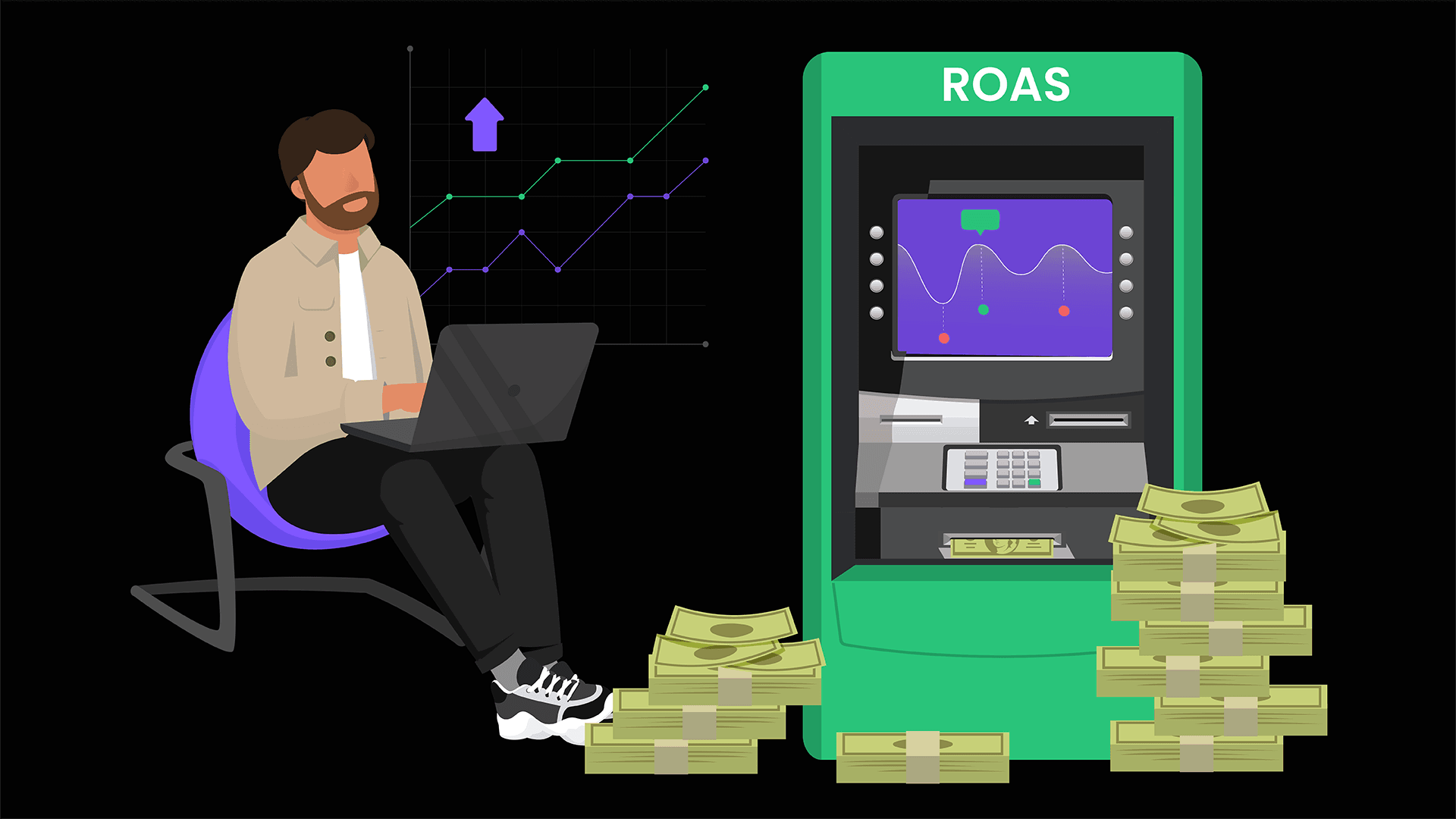
👉 We’re here to help you calculate your PPC ROI and make sure it's a worthwhile investment.
Stop lighting your PPC ad spend on fire, and make sure everything is running profitably with the tips below.
What is PPC?
Before we proceed discussing the methods on how you’re going to calculate your PPC ROI, let’s talk about PPC first.
PPC or pay-per-click is one of the multiple internet advertising models where it specifically drives traffic to websites in exchange for paying a fee each time someone clicks your ads.
When someone clicks your ad — which generates visitors to your website — you need to pay the search engine a small fee for their service. If you manage your PPC campaign correctly, you don’t have to worry about the money you invest in your ads.
For example, a $4 ad per click is nothing compared to when you convert a visitor in a $400 sale.
How much does Google PPC cost?
We've put together a guide which shows you the cost of Google ads by industry.
As a general rule of thumb, expect to pay anywhere between $0.50 - $5 per click on average, unless you're in a super competitive industry.
PPC ROI Calculation

Now that you’ve grasped the fundamentals of PPC, let’s discuss the ROI or return on investment. Your return is the profit or your sales as a result of your advertising.
ROI = (Revenue - Costs) / Costs
For costs, you need to include both your cost of goods sold + cost of advertising.
Example PPC ROI Calculation
🏃♂️ We're a running shoes company, selling our flagship shoes for $100 per pair.
- It costs us $50 to produce each pair of shoes.
- It costs us $16.66 on Google Ads to sell each pair.
So it costs us $66.67 in total to produce each pair of shoes, which we sell for $100 revenue for each pair.
Our ROI (return on investment) for PPC is therefore 50%.
-----
🧐 Quick calculation...
- ROI = (Revenue - Costs) / Costs
- ROI = ($100 - $66.67) / $66.67 = 50%
ROI vs. ROAS
While most of us want to know how to calculate ROI, many advertisers are actually referring to their return on ad spend (ROAS). So keep in mind if you want to calculate your return on ad spend (ROAS) or return on investment (ROI).
To put it more simply, it’s easier to calculate your ROAS.
However, if you spend more money on your PPC campaign, such as a third-party tool or an agency to manage your campaign, then it’s better to compute your ROI to get a more complete view of performance.

Return on ad spend can be figured out by dividing your total sales by your ad spend. Remember that your sales are earned by your PPC campaign.
The major difference between ROI and ROAS is whether you’re identifying your business related costs on your PPC advertising.
On the other hand, the return on ad spend focuses on how you earn more money in revenue than you’ve spent on advertising.
Pay-per-click (PPC) fees aren’t the only expenses your business has to incur.
There are other costs such as producing the products and paying for the clicks that weren’t converted into sales. A
lso, you need to consider the other costs like the credit card processing fees, costs of returned goods, and even the web hosting costs for your websites. You also need to include the salaries for your team, which can be considered as customer service costs.
Why ROI is Superior
That's why we think that calculating ROI is a superior metrics compared to ROAS - It takes into account all of the additional costs.
There are several factors that you need to consider when you want to calculate your ROI. Many people focus only on the click fees. However, that’s just the tip of the iceberg.
Here are some factors that might help you identify the costs of your business with PPC campaigns.
- Fees for the pay-per-click service
- Salary of your team (admin, customer service representative, etc.)
- Cost of marketing automation (lead gen app)
- Web Hosting costs for your website
- Equipment
- Transportation costs
How to improve your PPC ROI
It’s important to regularly improve your PPC campaigns. Make it a habit to analyze the performance of your account and make the following adjustments to calibrate the effectiveness of your campaigns.
Add PPC Keywords: Increase the presence of your PPC campaigns by adding suitable keywords, which are relevant to your business.
Split Ad Groups: Improve click-through rate (CTR) and Quality Score by splitting up your ad groups into smaller, more relevant ad groups, which help you create more targeted ad text and landing pages.
Review Costly PPC Keywords: Check your current keywords on your PPC campaigns. If there are expensive and under-performing keywords, try to use another keyword with the same meaning.
Refine Landing Pages: Calibrate your landing pages by checking the effectiveness of your content and review the calls-to-action (CTAs).
If you’d like help to refine and improve your PPC ad spend, then please feel free to contact us for a conversation.
